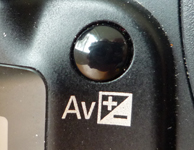I’ve often ranted in my courses about how horrible mid-day light is for photography. Apart from the colour temperature concerns – an overly bluish, cold tinge to the light – harsh shadows cast from overhead are unflattering, particularly on human subjects.
The flash, either the built-in pop-up variety or the accessory hot shoe type, can assist if you are forced to shoot in the daytime outdoors. Weddings fit this scenario. Turning on your flash to shoot outdoors may seem absurd, but pros use it all the time as ‘fill flash’. The word fill refers to the fact that the flash illuminates the face to fill in shadows in the eye sockets and under the nose and chin. Photographic Botox®, as it were.
The modern digital SLR does its best to balance the ambient outdoor light and the fill flash through ETTL (evaluative through-the-lens) metering. ETTL uses a number of different points on the image to determine what the correct exposure setting (ie. aperture and shutter speed) should be, and controls the output from the flash to properly illuminate the subject.
As brilliant as the microcomputer in the camera is at doing this, results can sometimes be other than expected. Let’s say the background looks properly exposed but the subject looks a little dark. If you have a strong backlight, this may mean re-positioning your subject. If that’s not possible, you can adjust the flash output, independently from the camera’s exposure setting, by using flash exposure compensation.
 |
| Accessory Flash Exposure Compensation |
There are two ways you can change flash output. The accessory hot shoe flash will allow you to adjust output using either the buttons on the flash itself OR through the flash exposure compensation setting in the camera. Depending on the camera, either the camera’s flash exposure compensation will be used or the setting dialled into the accessory flash will be used: they cannot be used in combination. For the built-in pop-up flash, you can (obviously) only use the camera’s flash exposure compensation setting. So, for the underexposed subject, set the compensation for, say, +2/3 stop and try again. The subject should brighten and balance with the background.
 |
| Exposure Compensation button on camera |
For the opposite scenario – the subject is properly lit by the flash but the background is too dark, you can use exposure compensation to control the background exposure. This is different from flash exposure compensation in that it controls the choice of aperture and/or shutter speed but not flash output. For a dark background, dial in a positive number, and for an overly bright background, dial in a negative number. You may have to tweak the flash exposure combination again to get the best result.
 |
| Negative Exposure Compensation plus positive Flash Exposure Compensation |
So, by setting flash exposure compensation and exposure compensation independently, you can achieve a balanced image.
Let’s leave the mid-day scenario and think about doing a portrait just after sunset (‘magic hour’). Using aperture priority or shutter priority modes, the camera’s metering system will try to expose the twilight sky properly before lighting your subject with the flash. If the subject looks overly bright and unnatural against the sky, you can balance them by using negative flash exposure compensation or a bit of positive exposure compensation, or both.
The results from doing so will amaze you. After all, the pros adjust their light sources to balance them against the ambient light.
Fatal error: Out of memory (allocated 186097664) (tried to allocate 23070032 bytes) in /hermes/bosnacweb08/bosnacweb08ac/b1393/nf.realworldphoto/public_html/filmscapes.ca/wp-includes/class-walker-comment.php on line 180